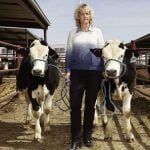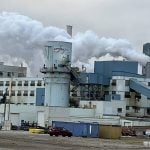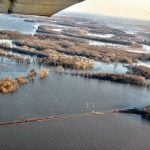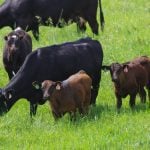This year will be remembered as a year the Canadian Prairies, with their associated forests, came close to being annihilated. At times, nearly 1,000 wildfires scorched millions of acres of forests and rangeland. Through the debacle, entire communities were evacuated in B.C., Alberta, Saskatchewan and Manitoba. Homes and businesses everywhere were destroyed by the inferno.
Year after year, wildfires make headlines around the world. In a single year (2020), 10.3 million acres burned in the United States, according to the National Interagency Co-ordination Center. As of early August, over 40,945 wildfires have burned approximately 3.6 million acres across the United States this year alone. Globally, about 102 million hectares (approximately 252 million acres) burned by mid-2025, with Africa accounting for half of that total.
For my family, this will be remembered as the year our fishing camp at Florence Lake burned — a special place for nearly 20 years. Only ashes remained. Also razed was Chad’s Point, where my son, Jason, and I built an inuksuk and deposited an urn containing my son Chad’s ashes and those of my brother, Marvin.
Read Also

Building demand together: The impact of Canada’s beef import levy
The beef import levy has become a central tool for ensuring balance in Canada’s beef industry
Wildfires create smoke containing particulate matter 2.5 microns in size, less than half the diameter of the cross-section of human hair, which measures seven to 7.5 microns. The very small particles invade lung tissue and small vessels of the cardiovascular system.
Unlike fire, smoke travels great distances, affecting more people and animals than the fire itself. In regions where wildfire smoke is common, long-term exposure can compromise cattle health, particularly their respiratory systems.
Animal well-being during stressful environmental events can affect all species. Studies in California from 2017-18 demonstrated negative effects on the cardiovascular system in cats and pregnancy rates in Rhesus macaques at a research facility. While previous research in Australia and the U.S. has attempted to survey the effects of wildfire smoke in animals, focused studies on livestock remain scarce.
Cattle producers in North America are acutely aware of the hazards of wildfire as the frequency and intensity of these events increase. Grazing patterns change, feed supplies — including pastures — are lost, and suboptimal animal health are major concerns when wildfires break out.
The total lung capacity of an adult cow is only 2.5 times greater than that of an average person, yet its resting oxygen requirement is more than 10 times greater. A cow’s lung capacity is 12 litres, its resting oxygen requirement is 124 litres per minute, and it takes 30 breaths a minute to meet this demand.
Of all domesticated species, cattle have the smallest relative lung capacity. For context, humans have six litres, horses can have over 50 litres, and cattle have between 12-13 litres. As a result, their respiratory system is under constant pressure.
The bovine lung is distinguished by the very thick connective tissue septa that separates areas on the surface and extends inward to divide the lung substance into segments. The septa, which may help to localize infection, become even more obvious in certain diseases. The capacity for respiratory exchange is limited, when compared to other species, by the relatively small total alveolar surface area and lower density of capillaries. A larger part of the lung capacity in the bovine is required for basal needs, leaving little lung reserve available in stressful circumstances, such as conditions induced by wildfire smoke.
As stated by the University of Oklahoma research team, “Understanding the physiology of the bovine lung is key to understanding the bovine susceptibility to lung disease, the development of emphysema and the economic impact of wildfire smoke.”
Researchers at Oregon State University followed up on a 2021 study that surveyed livestock producers in California, Nevada and Oregon about the effects of wildfire smoke on their herds’ productivity after the fire season.
“Livestock in all sectors, including beef and dairy operations, reported lost productivity in some way,” Juliana Ranches, extension beef specialist and assistant professor, said in an article on BQA.org. “The producers helped us recognize both direct and indirect losses from wildfire smoke exposure.”
This article represents my final contribution to Canadian Cattlemen. After 55 years of putting pen to paper, it’s time to sign off. My writing career comes to a close with a cookbook (Fat Boys in the Kitchen) and as I gather stories about my wonderful family. I have nearly 400 articles/stories on file, and I want to gather and organize what I have. At 79, time needs to be managed judiciously. Thanks for your feedback and encouragement to continue through the years.
Adios and thanks.
















